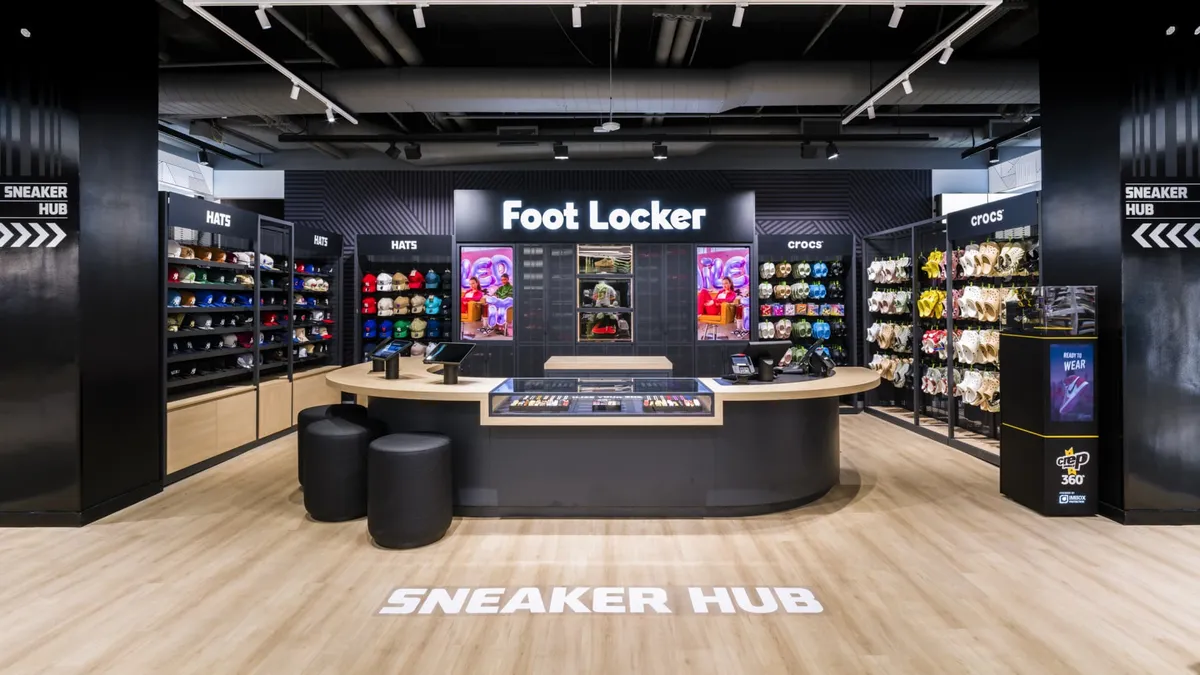
On Wednesday, Foot Locker announced expectations for another challenging year in the sneaker industry, primarily influenced by its largest brand partner, Nike. The footwear giant is undergoing a significant reset, relying on markdowns to dispose of stale inventory. Despite beating Wall Street's earnings expectations for the holiday quarter, Foot Locker's sales fell short, prompting concerns about future performance.
In its fiscal fourth quarter, Foot Locker reported earnings per share (EPS) of 86 cents on an adjusted basis, outperforming Wall Street's estimate of 72 cents. However, revenue for the quarter reached $2.25 billion, which was below the anticipated $2.32 billion. The company's net income for the three months ending February 1 was $49 million, or 51 cents per share, a significant improvement from a loss of $389 million, or $4.13 per share, a year prior.
When excluding one-time items such as impairment charges and net losses from discontinued operations, Foot Locker's adjusted earnings still reflect a strong performance with $82 million, translating to 86 cents per share. However, sales dropped nearly 6% from $2.38 billion in the previous year, skewed by an extra week of sales during the same period last year.
Looking ahead, Foot Locker anticipates profits in fiscal 2025 to be lower than Wall Street estimates, with adjusted EPS expected to be between $1.35 and $1.65—below the expected $1.77. On a more positive note, the company forecasts comparable sales to rise between 1% and 2.5%, surpassing analysts' expectations of a 1.9% increase.
CEO Mary Dillon emphasized that while consumer promotional pressures may linger into 2025, Foot Locker's Lace Up Plan continues to resonate with customers and brand partners. She highlighted the return to positive comparable sales growth, gross margin expansion, and positive free cash flow in fiscal 2024 as indicators of the plan's success.
Despite the optimistic outlook, Foot Locker's expectations of ongoing promotional pressures indicate persistent challenges with Nike. As Nike represents approximately 60% of Foot Locker's sales, its reliance on deep discounts to clear inventory significantly impacts Foot Locker's business. Nike's new CEO, Elliott Hill, has attributed declining revenue and profit to excessive discounting, which Foot Locker is keen to address.
To counter this, Foot Locker aims to drive full-price sales on its website, while also needing to liquidate old inventory through less profitable channels. This situation is exacerbated by Nike's own promotional strategies; for instance, a Nike Air Force 1 '07 model is offered at a 39% discount on Nike's website, while the same model in different colors remains at full price on Foot Locker’s site. This discrepancy poses a challenge for Foot Locker as consumers may choose to purchase directly from Nike.
Under Dillon's leadership, Foot Locker is diversifying its brand partnerships, engaging with emerging companies like On Running and Hoka, as well as established brands like Ugg. The company is also enhancing relationships with its brand partners through efforts to refresh and remodel its aging store fleet, which still accounts for about 80% of sales. This strategic shift includes spending an additional $270 million on customer-facing capital expenditures in the coming year.
Despite these efforts, Foot Locker is preparing for a contraction, with a projected 4% decrease in the number of stores and a 2% decline in square footage for fiscal 2025. Nevertheless, the company reported a 2.6% increase in comparable sales for the last quarter, surpassing the expected 2.3%. Notably, there are signs of recovery at the Champs Sports banner, which had previously been a drag on overall performance, with comparable sales growing by 1.8%.
The performance of Foot Locker's namesake chain showed promising results, with comparable sales rising 5.5%. However, the overall metric was negatively impacted by the WSS banner, which experienced a 3.3% decline. The most significant challenge remains in the Asia Pacific region, where sales dropped 14.1%, primarily driven by a 24% decline at the atmos banner.
In summary, Foot Locker is navigating a complex landscape of promotional pressures and shifting consumer behaviors as it prepares for fiscal 2025. While there are positive indicators in terms of sales growth and diversification, the company must continue to adapt its strategies to maintain its position in the competitive sneaker market.